Assignment 1A
- Name: Baorong Huang
- Student Number: n10172912
Score: 5/8
Problem 1. Regression
The purpose of the data is to explore the link between the various socio-economic factors and crime.
Data Characteristics
Data Split
The split of train, validation and test set is not ideal. Normally we want them to be roughly 70/15/15.
Variable Range

Let's explore the distribution of the training data by drawing A boxplot over input variables. By analyzing the plot above, we can see that all the variables have the same range 0~1. But they have different mean and standard deviation.
Correlation
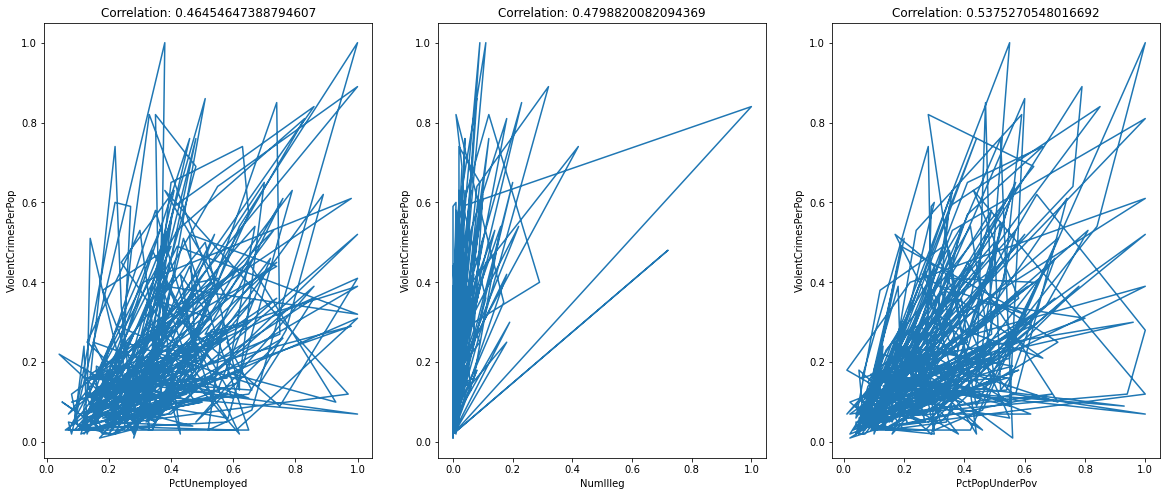
Some variables are correlated with the response ViolentCrimesPerPop. For example, PctUnemployed, NumIlleg, and PctPopUnderPov. And these values are far away from
0, which indicates that there is a linear association between the response variable and the input variables.
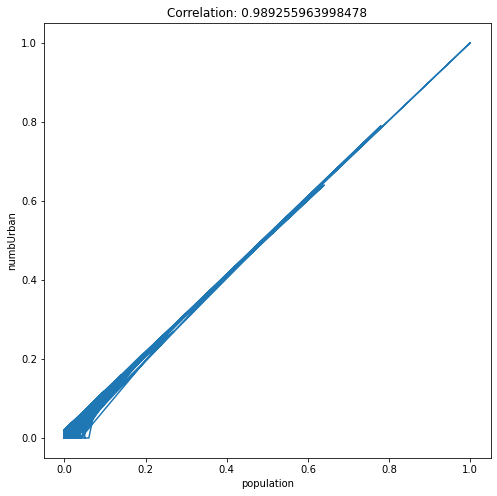
In linear regression, predictors are expected to be uncorrelated with each other, since each predictor models a different aspect of the overall relationship. If they are correlated, we can end up with redundancy in the model.
Consider the graph above, it is clear that population and numbUrban are correlated and the correlation is 0.98, and thus the relationship between these two variables and the response (ViolentCrimesPerPop) will be (to some extent) captured twice in a linear regression model. In addition, it would also cause the p-value to be less important.
Pre-processing
Standardization
Because regularized linear regression models like Ridge and Lasso will be trained later. And to help regularization to penalize all weights equally. Standardization will be performed as one pre-processing step.
The standardization is achieved by .
- is the standardized result.
- is the original data.
- is the mean of the data.
- is the standard deviation of the data.
Here is the python code that standardizes the input data including train, validation, and test set.
from sklearn.preprocessing import StandardScaler
scaler = StandardScaler()
scaler.fit(X_train)
s_X_train =pd.DataFrame(scaler.transform(X_train), columns=X_train.columns, index=X_train.index)
s_X_val =pd.DataFrame(scaler.transform(X_val), columns=X_val.columns, index=X_val.index)
s_X_test =pd.DataFrame(scaler.transform(X_test), columns=X_test.columns, index=X_test.index)

The above graph shows the data distribution after standardization. All variables have a mean of 0, and a standard deviation of 1. This enables regularized regression treat variables equally.
Linear Model
Model Development
Below is the python code for training a linear regression model to predict the number of violent crimes per captia from the socio-economic data.
import statsmodels.api as sm
# s_X_train the standardized data
linear_model = sm.OLS(Y_train, s_X_train).fit()
# Draw a qqplot for residuals.
statsmodels.api.qqplot(linear_model.resid, line="s")
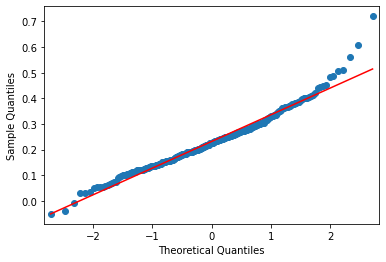
Residuals form a gaussian/normal distribution. Consider the qq-plot above, it forms straight line. And for the histogram, it is represented as a bell curve.
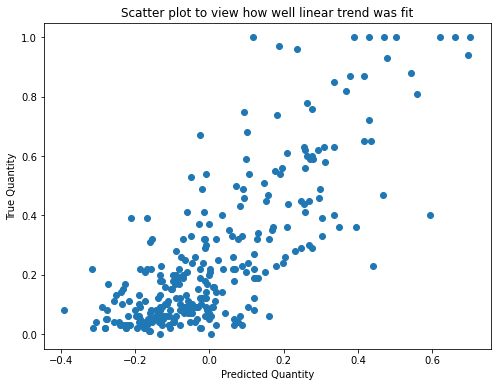
The scatter plot shows that the model fits the training data in a certain degree.
Analysis of Results
OLS Regression Results
================================================================================
Dep. Variable: ViolentCrimesPerPop R-squared (uncentered): 0.346
Model: OLS Adj. R-squared (uncentered): 0.016
Method: Least Squares F-statistic: 1.048
Date: Mon, 25 Apr 2022 Prob (F-statistic): 0.386
Time: 06:42:53 Log-Likelihood: -14.711
No. Observations: 298 AIC: 229.4
Df Residuals: 198 BIC: 599.1
Df Model: 100
Covariance Type: nonrobust
=================================================================================
R-squared of the linear model is 0.346. This indicates that the model can explain a certain amount of pattern in the training data.
coef std err t P>|t|
-----------------------------------------------------------------
population 0.0988 0.313 0.315 0.753
householdsize -0.0767 0.119 -0.646 0.519
racepctblack 0.0102 0.098 0.104 0.917
racePctWhite -0.0260 0.095 -0.274 0.784
racePctAsian -0.0185 0.050 -0.371 0.711
racePctHisp -0.0982 0.097 -1.012 0.313
agePct12t21 -0.0398 0.127 -0.313 0.755
agePct12t29 0.1069 0.174 0.614 0.540
agePct16t24 -0.0256 0.214 -0.120 0.905
agePct65up 0.0216 0.125 0.173 0.863
numbUrban -0.0957 0.304 -0.314 0.753
...
Many predictors have a high p-value. This means that those predictors are not significant.
One possible reason is that some predictors are correlated with other predictor. see correlation section above. Therefore, the relationship between that variable and the response is captured twice in the model.
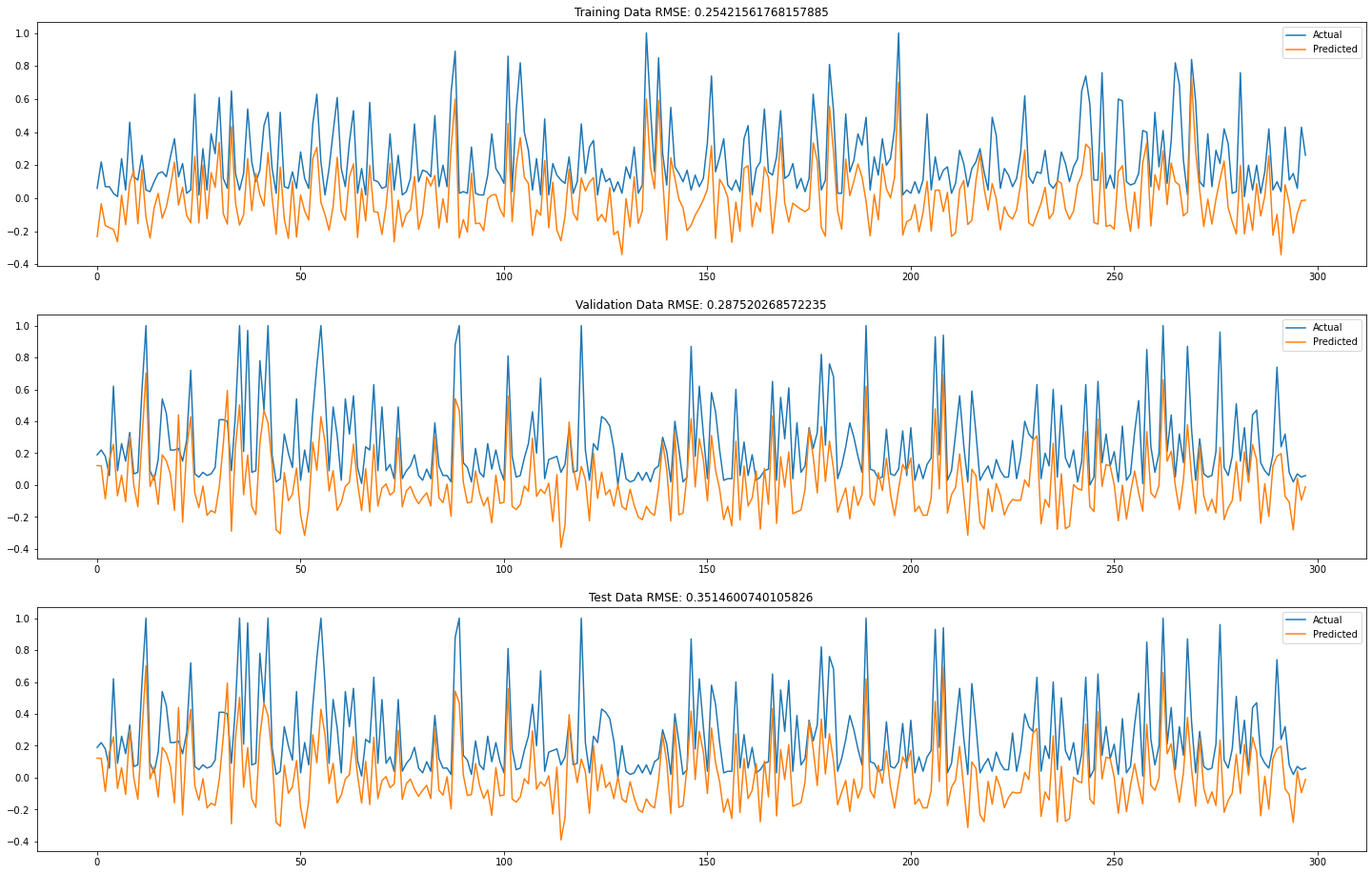
The RMSE for the training set is 0.25. And the RMSE for the validation set is 0.28. The model has a reasonable low value of RMSE, the smaller the better. In addition, the RMSE for the validation set is also small. This indicates that there is no sign of overfitting in this model.
Analyze the performance on test set: the RMSE for test set is 0.35. The performance might increase if we simplify the model by removing less significant terms.
Ridge Regression Model
Model Development & Hyper-parameter Selection

Initially, I train a series of Ridge regression model with the lambda given by np.arange(0, 100, 0.01) on validation set and discovered that the best lambda is 16.6 which result in a validation RMSE of 0.142.
In order to get a better result, I then I start another search using np.arange(0, 30, 0.005) as the lambda list. Finally, the best lambda is 16.599 and the validation RMSE is 0.142. This is similar to the result of the first training.
Analysis of Results
Validity

The Q-Q plot of the model's residual form a straight line. This means that the residuals are normally distributed which meet the assumption of linear model. So the model is valid.
Accuracy
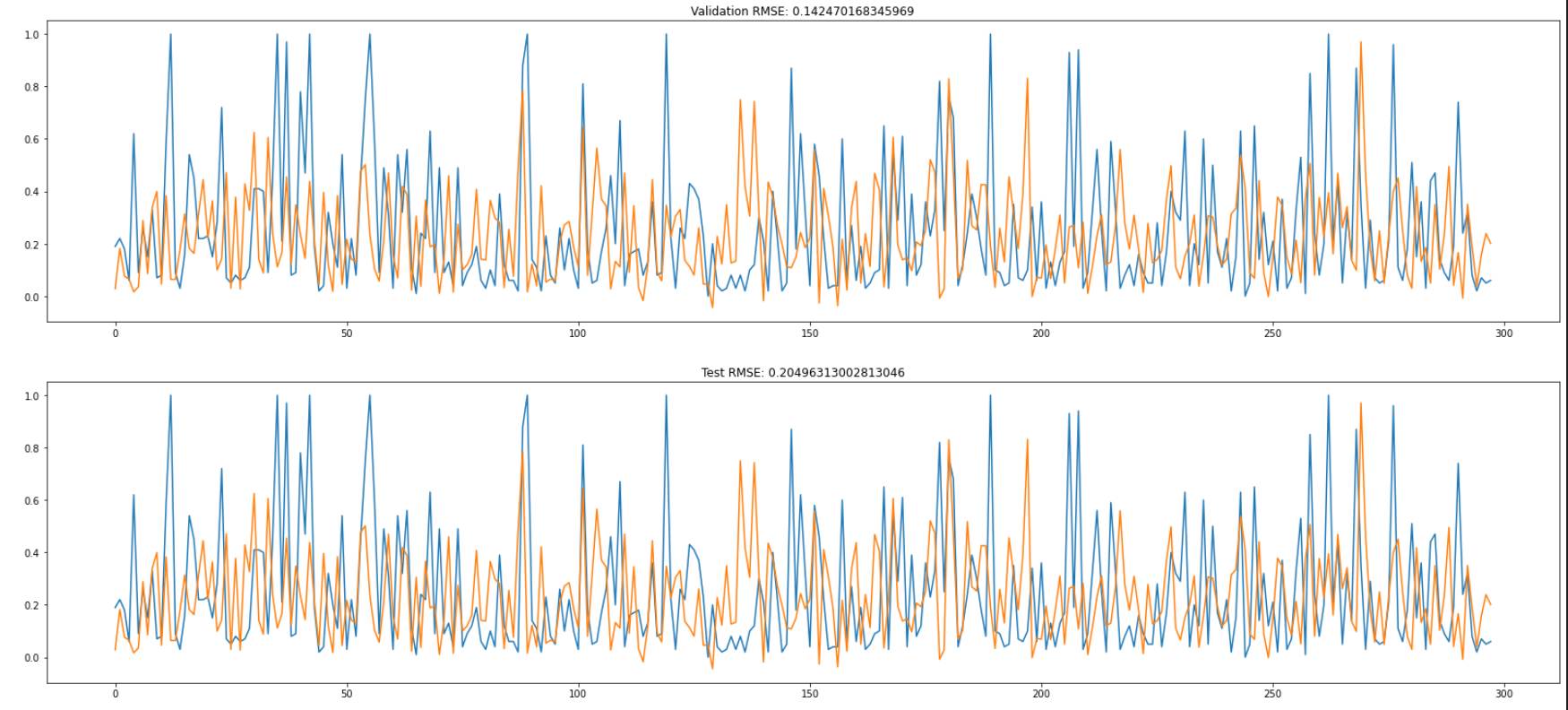
The RMSE for validation set is 0.14. And the RMSE for the test set is 0.2. This indicates that the Ridge model fit the data quite well and can generalize well on unseen data.
LASSO Regression Model
Model Development & Hyper-parameter Selection

Initially, I trained LASSO model with different lambda given by np.arange(0, 0.5, 0.01) on the validation set and discovered the best lambda is 0.01 with RMSE of 0.148. And after this point, the RMSE goes up in graph. So I expect the best lambda will exist near the point.
I start another search using np.arange(0, 0.2, 0.0001) as the lambda list. Finally, the best lambda is 0.001 and has RMSE of 0.1431.
Analysis of Results
Validity

The Q-Q plot of the model's residual form a straight line. This means that the residuals are normally distributed which meet the assumption of linear model. So the model is valid.
Accuracy

L1 regularization forces some of the coefficients to be zero and results a simpler model. It can help reduce the impact caused by the correlation between predictors.
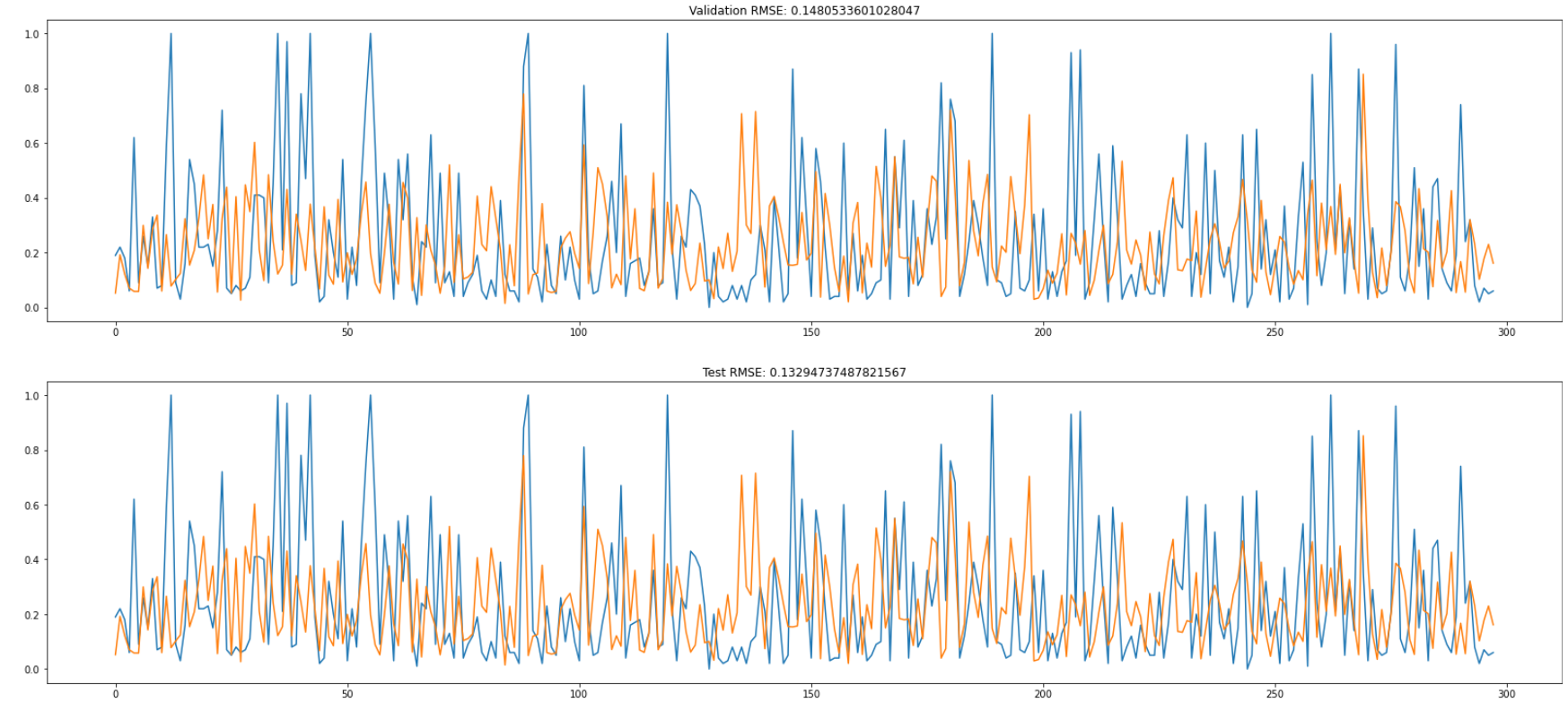
The RMSE for the validation set is 0.14. And the RMSE for the test set is 0.13. This indicates that the LASSO model fit the data quite well and can generalize well on unseen data.
Comparison of Models
- Linear Model: test set RMSE is 0.35
- Ridge Regression Model: test set RMSE 0.2
- LASSO Regression Model: test set RMSE 0.13
By comparing the RMSE on test set, it is clear that LASSO regression model performs best.
Problem 2. Classification
Data Characteristics
Different Range
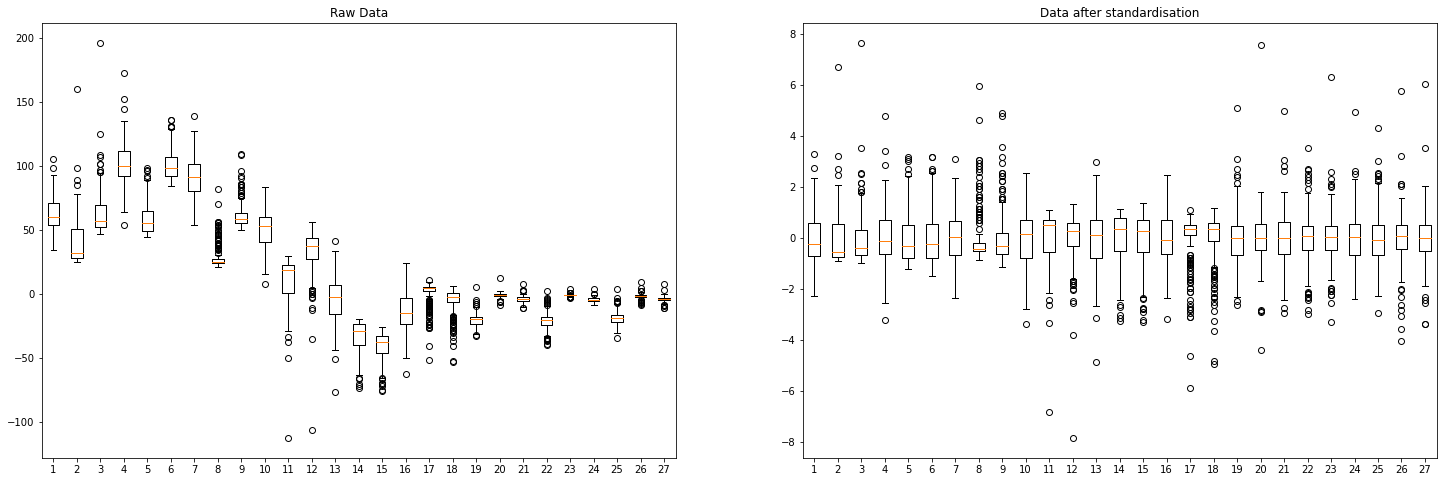
Given the box plot above, it is clear that variables are in different scales.
Class Imbalance
The histogram shows that class "o" has the smallest number of samples in training set and it is significant smaller than other classes, which might cause class imbalance. While class "s" has the largest number of samples.
Pre-processing
Standardization
Because input variables are in different scales. Standardization is applied to make sure input data have the same mean and standard deviation.
K-Nearest Neighbors Classifier
Model Developer & Hyper-parameter Selection
A randomized search is performed to search for optimal hyper-parameters.
- Number of neighbors:
n_neighbors. - weights: ['uniform', 'distance']
Use sk-learn's RandomizedSearchCV(knn, params) to search for hyper-parameters. Obtain the hyper-parameters from RandomizedSearchCV and evaluate it on validation set to improve accuracy as well as score.
Analysis of Results

From above we can see that:
- The model is quite accurate (~83%)
- The model cannot classify "h" and "o" very well. Because in the training set, class "h" and "o" have the smallest number of samples. (class imbalance).
Random Forest
Model Developer & Hyper-parameter Selection
Use the Halving Grid Search method to search for optimal hyper-parameters. It will start by evaluating all systems on a small sample of data. It will then take only the best half of the systems and evaluate them on a larger sample. (lecture notebook) After obtaining the best hyper-parameter, I then evaluate it on validation set to improve accuracy as well as score.
rf = RandomForestClassifier(random_state=42)
param_grid = {'max_depth': [2, 4, None], 'min_samples_split': [5, 10], 'n_estimators' : [25, 50, 100]}
halving_search = HalvingGridSearchCV(rf, param_grid, random_state=0).fit(X_train, Y_train)
Analysis of Results

precision recall f1-score support
d 0.86 0.71 0.78 52
h 0.84 0.70 0.76 23
o 0.59 0.67 0.62 15
s 0.81 0.93 0.87 74
accuracy 0.80 164
macro avg 0.78 0.75 0.76 164
weighted avg 0.81 0.80 0.80 164
From above we can see that :
- The model is doing a great job on training set. However, it cannot classify "d", "h", and "o" very well in test set.
- Class "o" has the lowest precision, recall, and f1-score. This might due to the fact that it has the smallest number of samples.
Support Vector Machines
Model Developer & Hyper-parameter Selection
Use a grid search to search over the hyper-parameter space for SVM:
- Values of C
- Different kernels
- Kernel parameters
In my example, 3 grids are created and passed to sk-learn's GridSearchCV() to search for the optimal hyper-parameters.
param_grid = [
{'C': [0.1, 1, 10, 100, 1000], 'kernel': ['linear']},
{'C': [0.1, 1, 10, 100, 1000], 'gamma': [0.1, 0.01, 0.001, 0.0001], 'kernel': ['rbf']},
{'C': [0.1, 1, 10, 100, 1000], 'degree': [3, 4, 5, 6], 'kernel': ['poly']},
]
svm = SVC()
grid_search = GridSearchCV(svm, param_grid)
grid_search.fit(X_train, Y_train)
After finding the best hyper-parameters using a grid search. I then create a model using the hyper-parameter and evaluate it on validation set. Finally, tune the parameters in the param_grid to improve validation set accuracy as well as score.
Analysis of Results

From the above we can see:
- The SVM model is quite accurate (85%)
- The model is not great at classifying class "o" and "s".
Comparisons of Models
- K-Nearest Neighbors Classifier: Test Accuracy: 0.83
- Random Forest Classifier: Test Accuracy: 0.8 (only good at one class).
- SVM: Test Accuracy: 0.85
These three models are all bad at classifying class "o". The SVM classifier is the best model.
Appendix
- Jupyter Notebook for Q1 https://github.com/xiaohai-huang/cab420-workspace/blob/master/work/machine-learning/a1/Q1/q1.ipynb
- Jupyter Notebook for Q2 https://github.com/xiaohai-huang/cab420-workspace/blob/master/work/machine-learning/a1/Q2/q2.ipynb